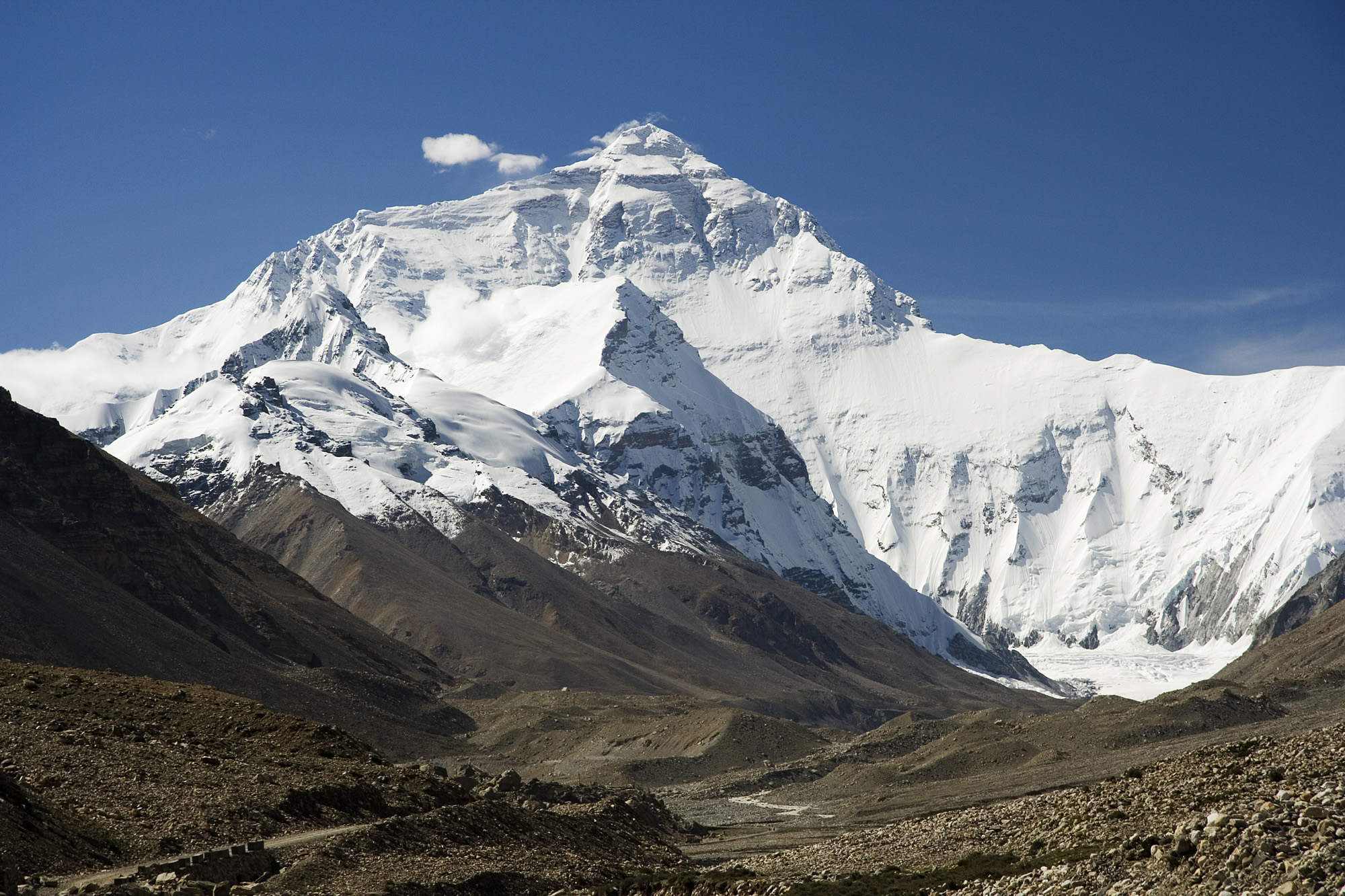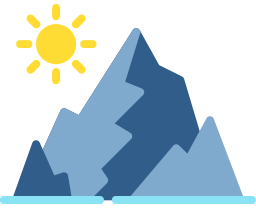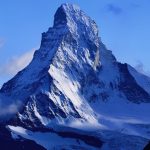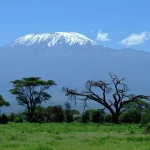
Mount Everest (also called Jomolungma) is known to be the highest mountain in the world, but only if you don’t take absolute height as a criterion. Everest rises the highest above sea level of any mountain on earth, but there is a volcano called Mauna Kea that grows from the bottom of the ocean, so it is actually higher. However, as the summit of Everest is the highest point on the planet, it is the main goal of most climbers who dream of conquering the giant at least once.
Origin of the name
Jomolungma is a Tibetan name meaning “Divine Mother of Life Energy”. This unusual name was chosen in honour of the Bon Goddess Sherab Jumma. It is a symbol of maternal energy. The Tibetans also gave the mountain a second name with the same etymology: Jomo Gang Kar, which translates as “Holy Mother, white as snow”.
Another popular name comes from English, as it was given as a tribute to George Everest. In the early 19th century he was a renowned figure in geodetic surveying. The scientist’s successor proposed his name after a member of the service in which Everest worked made the world’s first measurement of “Peak XV”, believed to be the highest in Eurasia and presumably on the planet.
There is another name given by the people of Nepal. In their language, Mount Jomolungma sounds like Sagarmatha, meaning “mother of the universe”. Nepal is particularly fond of the highest peak, so they prefer to call it by its native name.
Location and characteristics
There is hardly anyone who does not know on which continent the highest peak (Eurasia) is located. Everest is told in geography lessons, showing where the mountain is located, which hemisphere it belongs to. Many people do not know in which country Jomolungma is located, but the geographical coordinates help to determine the exact location of the highest point on the planet, and it is China. Its latitude and longitude in degrees are as follows: 27°59′17″N. 86°55′31″E.
The mountain is part of the Himalayan range, being part of the Mahalangur-Himal range. It actually belongs to two countries, Nepal and the PRC, and the highest point, the North Summit, is part of China. Its height in metres is 8,848. The south summit is slightly lower, but nevertheless reaches 8,760 metres.
Because of its extraordinary height, Everest has been measured relatively recently. The first estimate appeared as early as 1852 during trigonometric calculations. Theodolites were already in use in the 1950s and with their help an exact value of 8848.13 metres could be recorded. Subsequently, various information was provided in which the figures fluctuated sharply up and down. The reason for this is that the summit is formed by glaciers, which can rise and fall for various reasons. The height of Mount Everest is officially recognised as 8848 metres and its solid rock ends at 8844 metres.
Everest’s shape resembles a pyramid with three faces, the southern slope being steep and bare, as snow and ice slide down this side. Due to the high altitude, it is not surprising that wind speeds can exceed 200 metres per second. Summer temperatures fluctuate around 0°C, dropping to -35°C during the day and to -50 or even -60°C at night in January.
Dangers for mountaineers
Every mountaineer should be aware of the risks to his or her life when venturing to the top of the world. The list of dangers includes:
- injuries incompatible with life;
- heart failure;
- lack of oxygen;
- extreme cold and wind;
- tragic accidents (rope breakage, oxygen cylinder freezing).
Statistically, one in ten climbs is fatal for a climber. Many of those unfortunate ones stay on the mountain forever, as there is no way to get them out. There are reportedly some 200 bodies of dead daredevils resting on the slopes of Everest. Avalanches, another treacherous enemy on the way to the summit Avalanches, another treacherous enemy on the way to the summit The hardest part of the climb is considered to be the final three hundred metres, not for nothing was it called “The Longest Mile on Earth”. Lack of oxygen and harsh weather conditions combine with a steep climb up a rocky, snow-covered slope. The danger of this stretch is illustrated by the fact that the climbers cannot even belay their companions, as each relies solely on his or her own strength. When climbing the mountain, the climber will be able to inhale three times less oxygen than usual due to the low air pressure. Every year since 1969, a climb has resulted in the death of at least one person. Only 1977 was a happy year.
History knows of cases where whole groups of climbers perished. In May 1996, for example, eight people were trapped in a snowstorm, and in 2014 an avalanche killed thirteen climbers, three of whom could not be found. Due to the large number of deaths on the mountain slopes, there has even been talk of a cemetery. It is worth noting that many climbers, who are not the first to ascend the mountain, know the locations of the bodies of their companions who died here earlier. For example, the climber who died in 1996 remains buried forever on the slope and serves as a kind of 8500 m marker for other daredevils.
You may also lke:


